Abstract
Two experiments were conducted to investigate the effects of stimulus—stimulus pairing on conditioning vocal sounds as reinforcers. Four preschoolers with severe language and communication delays participated. In Experiment 1, an attempt was made to condition vocal sounds as a reinforcer by pairing a specific vocal sound with a reinforcing event (e.g., physical interaction). Results indicated that presentation of a stimulus—stimulus pairing was effective in conditioning the target vocal sounds as reinforcers, which increased the occurrence of vocalizations of those sounds by the participants. Experiment 2 compared the effects of the pairing procedure with those of echoic training. The pairing procedure was identical to that in Experiment 1. In the echoic training condition, the experimenter produced the target vocal sound and gave the participant an opportunity to echo. The same reinforcing stimulus (e.g., physical interaction) was provided contingent upon the occurrence of the target vocal sound emitted by the participant. Results showed that the pairing procedure was more effective than the echoic training. Findings from this study suggest that for these participants, who had no vocal imitation skills, the stimulus—stimulus pairing was an effective procedure for conditioning vocal sounds as reinforcers and increased the probability of occurrence of the vocalization without a direct reinforcement contingency.
Full text
PDF


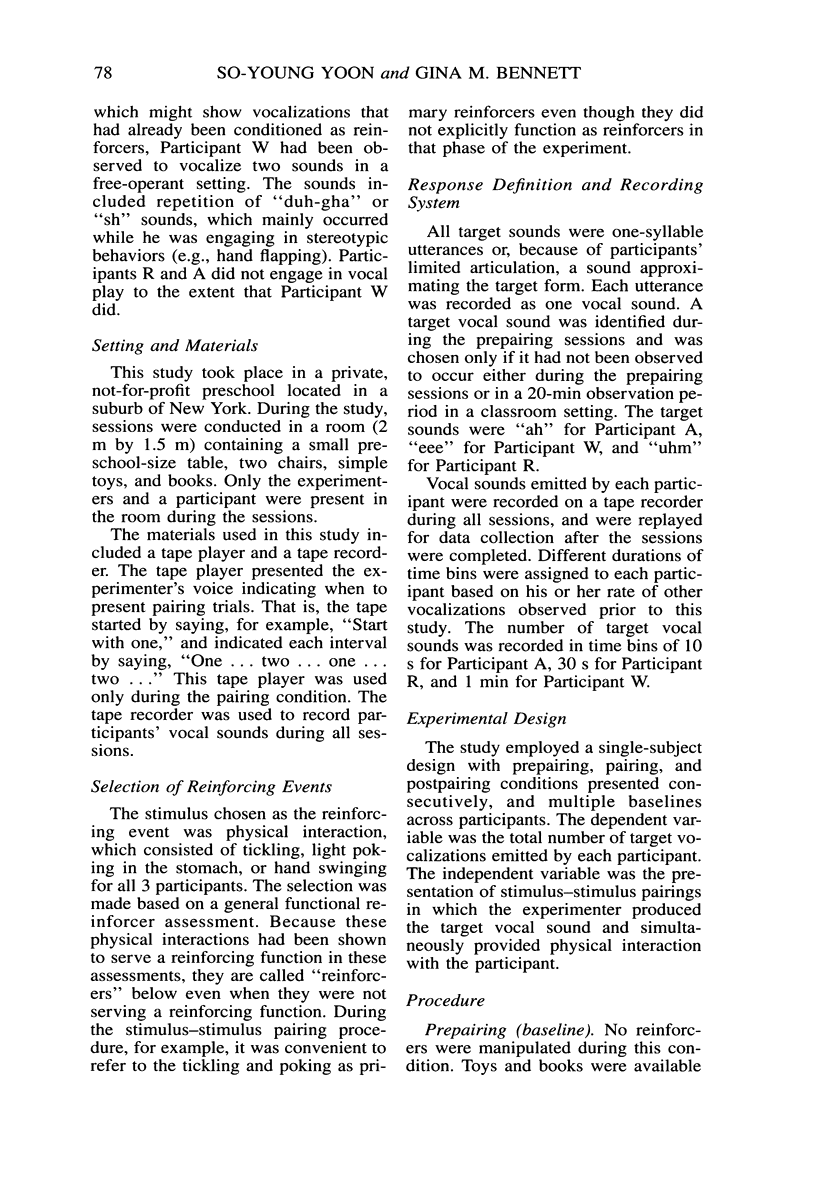


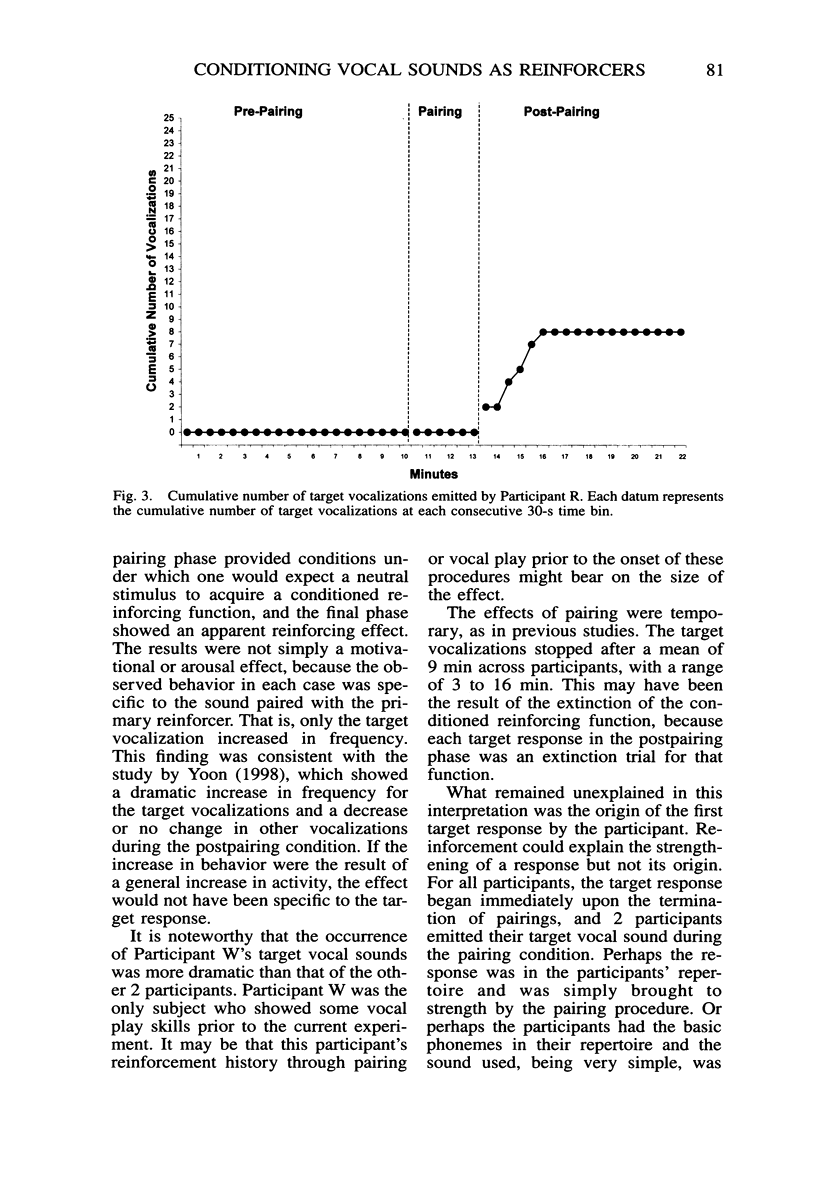

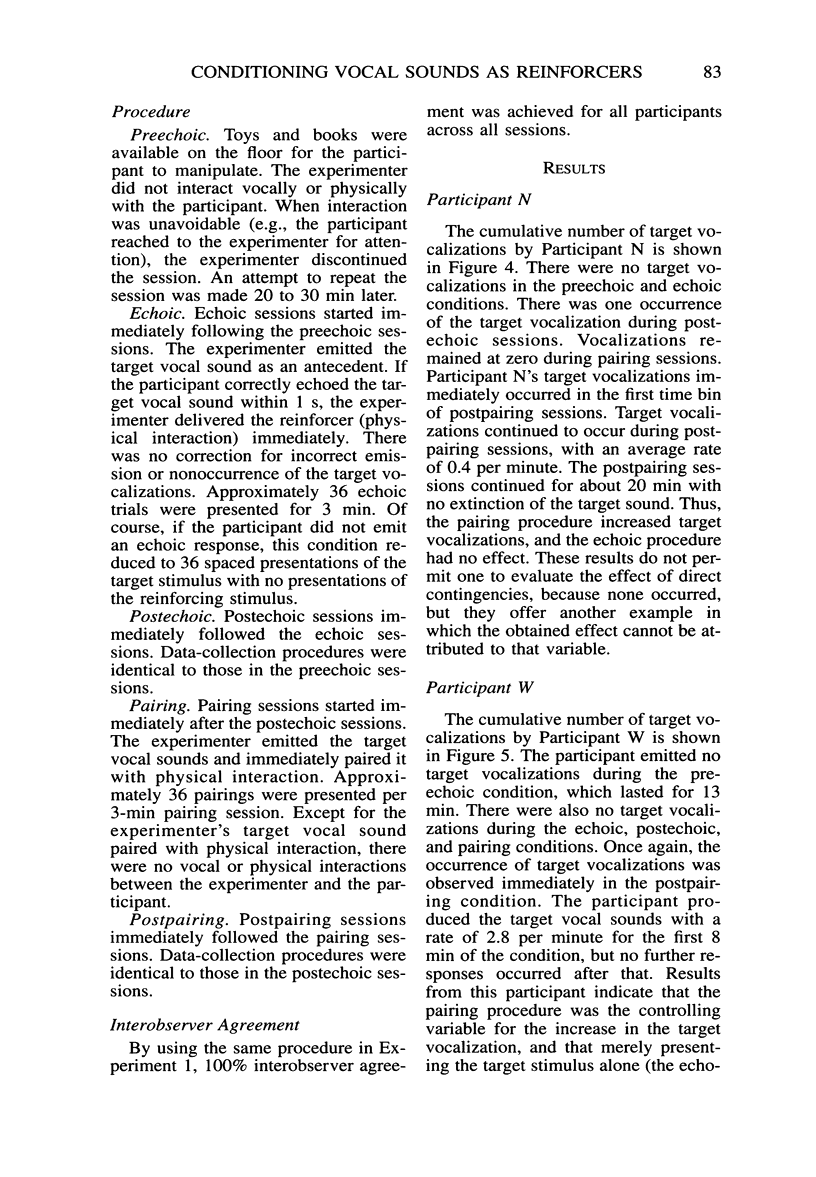
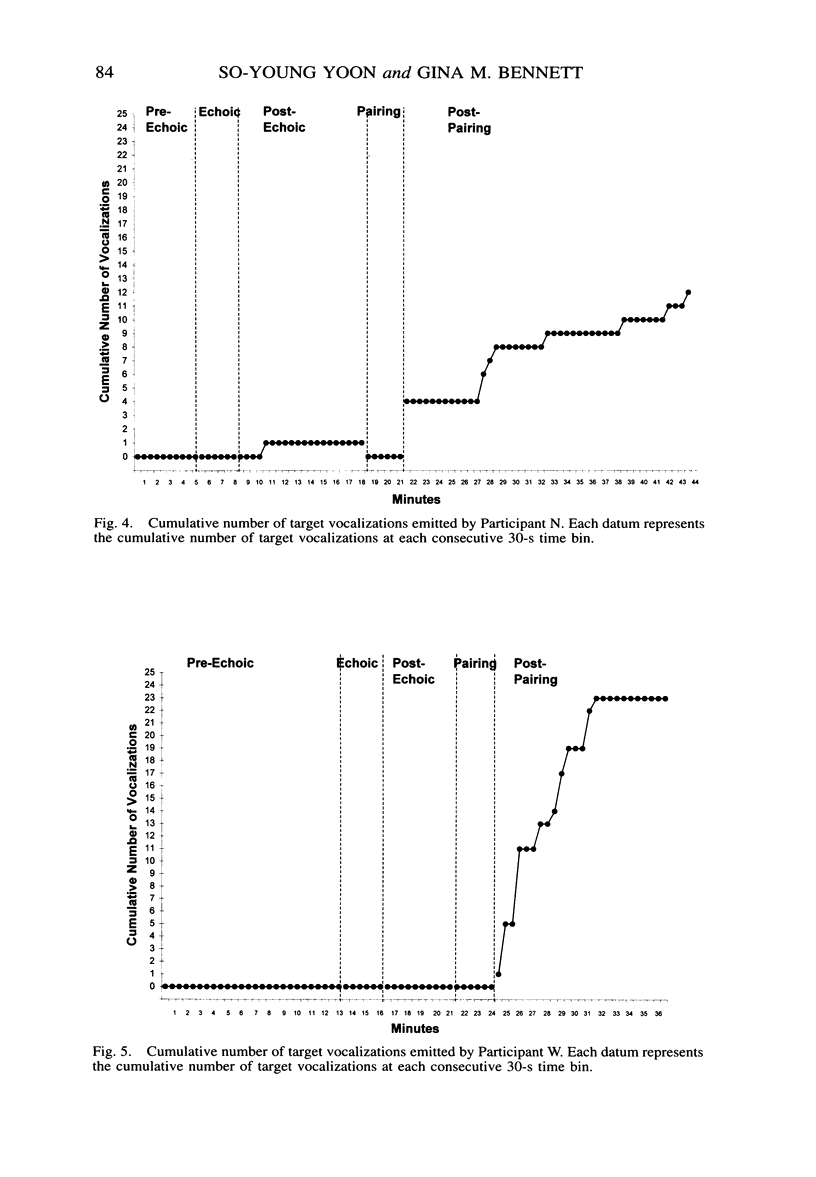
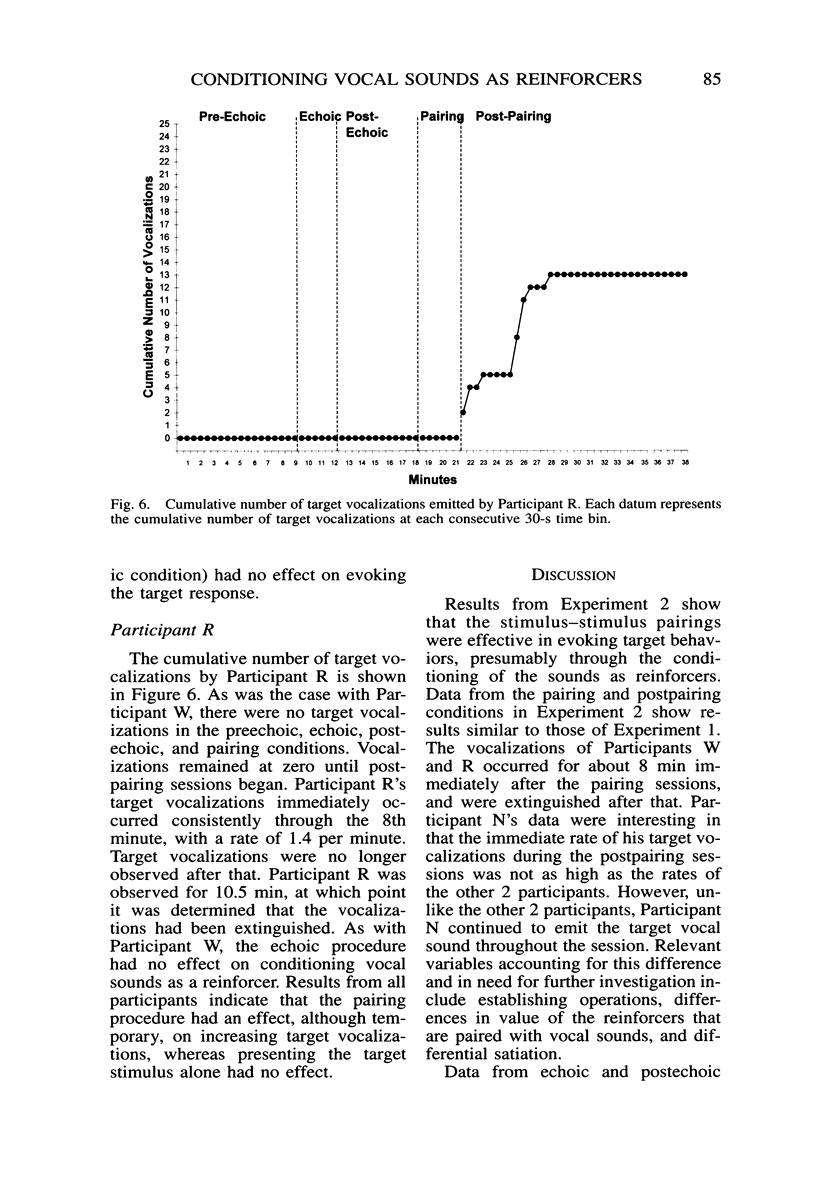


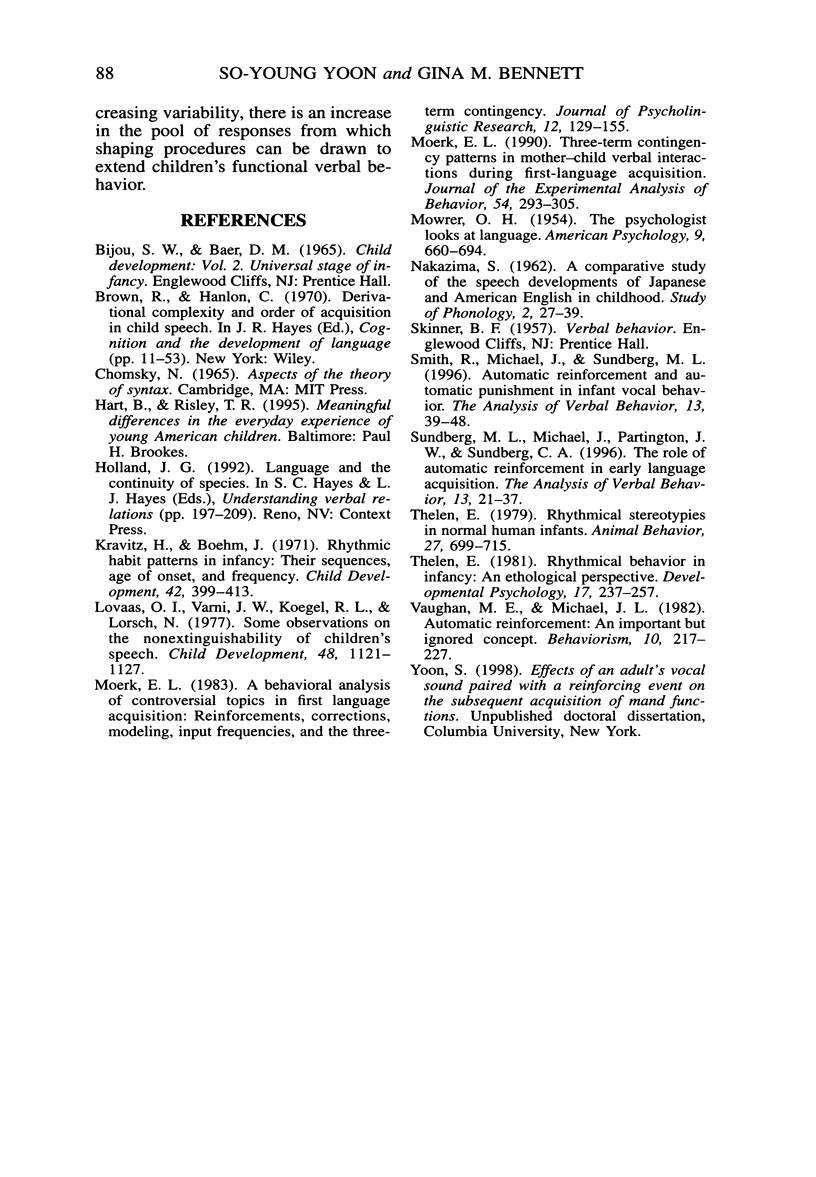
Selected References
These references are in PubMed. This may not be the complete list of references from this article.
- Andersson B. S., Vidal R. F., Sundberg M., Rajs J., Sótonyi P. Hydroperoxide-induced nucleotide degradation and adenosine formation in isolated rat cardiomyocytes. Toxicology. 1996 Jan 8;106(1-3):39–48. doi: 10.1016/0300-483x(95)03158-c. [DOI] [PubMed] [Google Scholar]
- Kravitz H., Boehm J. J. Rhythmic habit patterns in infancy: their sequence, age of onset, and frequency. Child Dev. 1971 Jun;42(2):399–413. [PubMed] [Google Scholar]
- Moerk E. L. Three-term contingency patterns in mother-child verbal interactions during first-language acquisition. J Exp Anal Behav. 1990 Nov;54(3):293–305. doi: 10.1901/jeab.1990.54-293. [DOI] [PMC free article] [PubMed] [Google Scholar]
- Thelen E. Rhythmical stereotypies in normal human infants. Anim Behav. 1979 Aug;27(Pt 3):699–715. doi: 10.1016/0003-3472(79)90006-x. [DOI] [PubMed] [Google Scholar]


